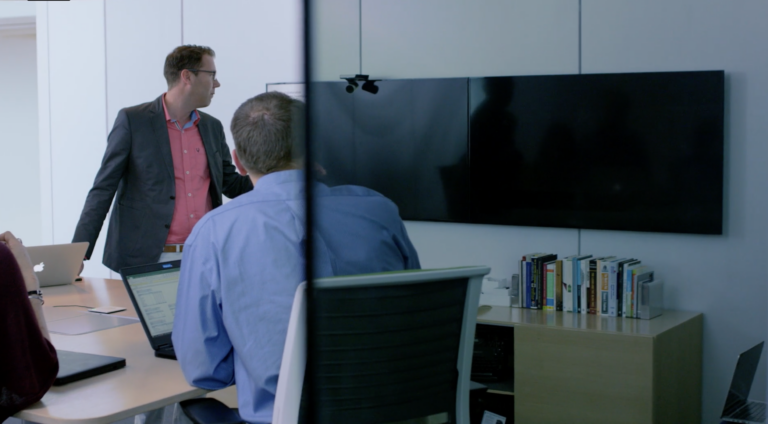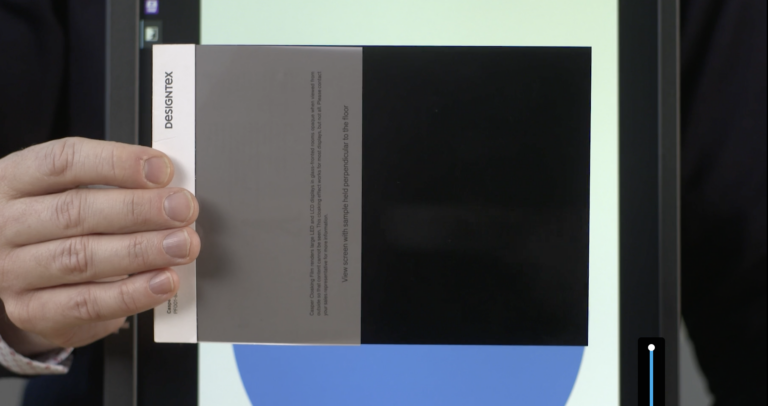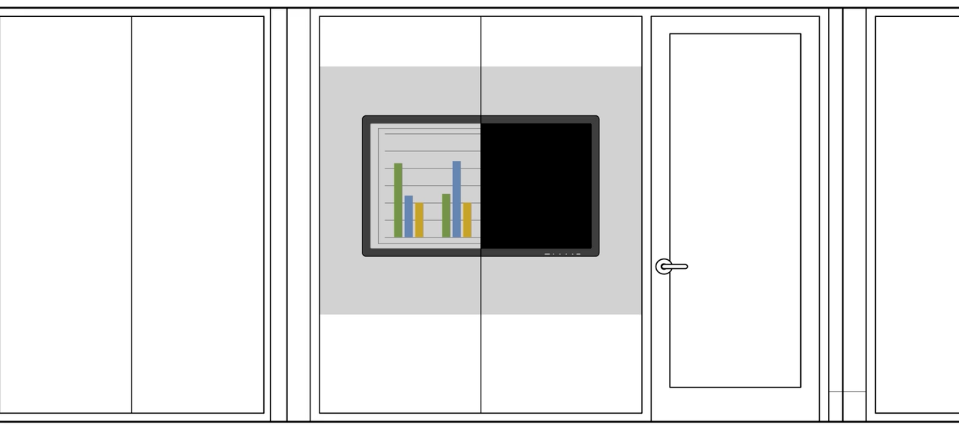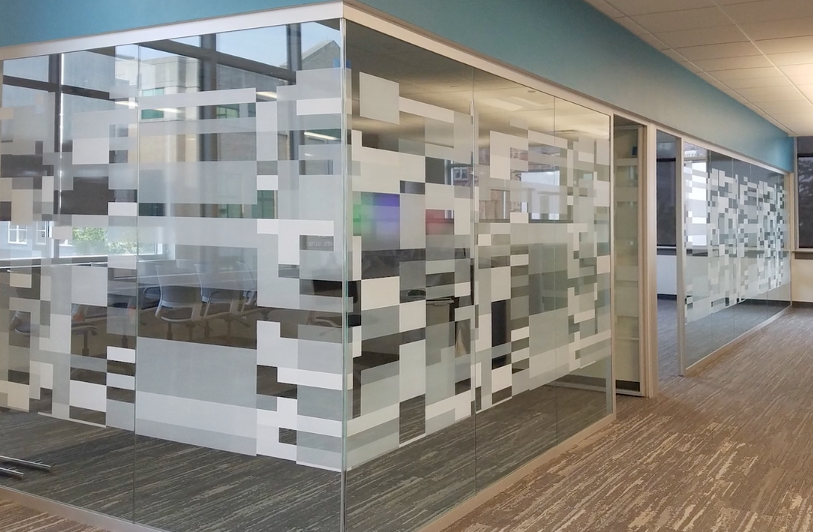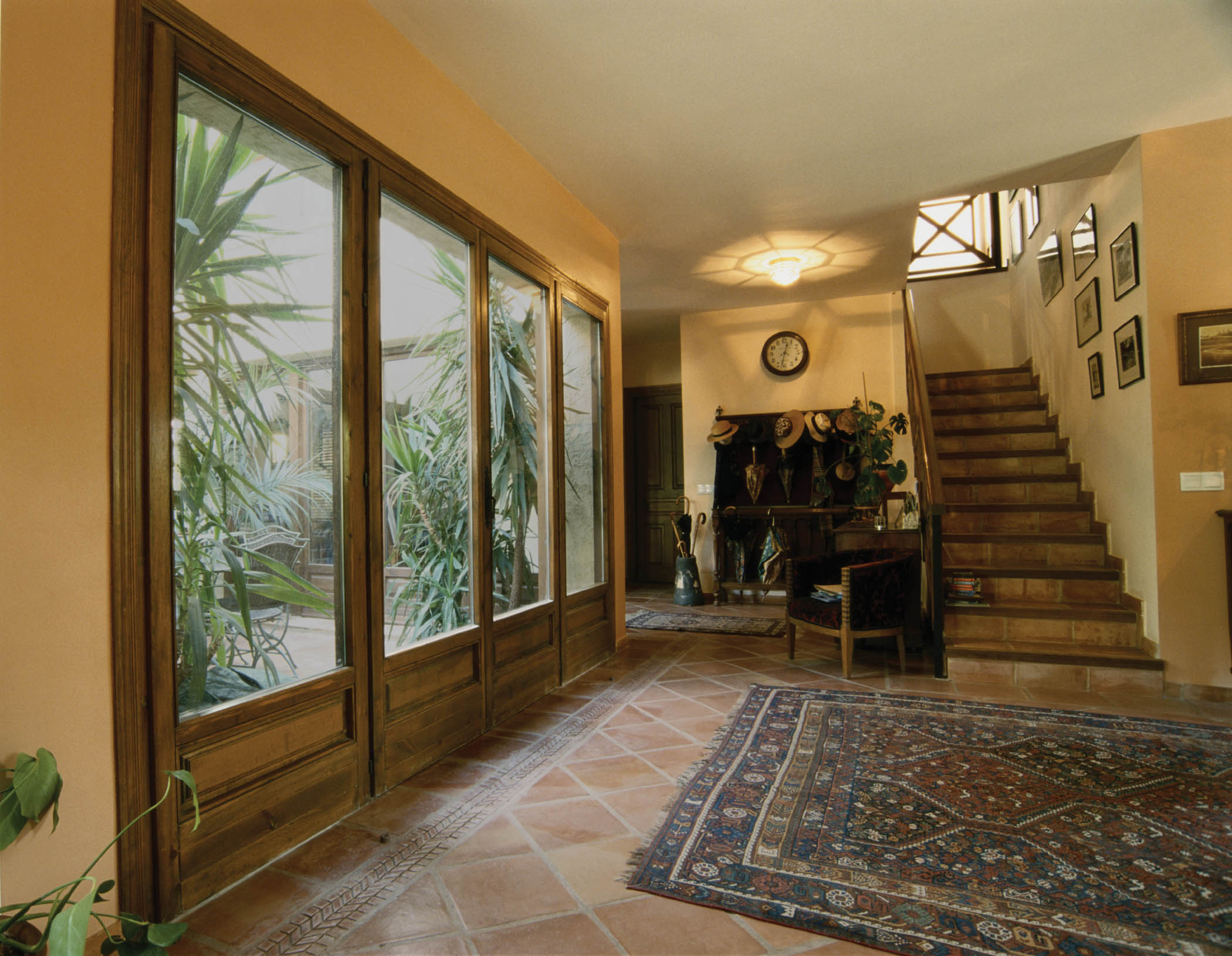Casper Cloaking Film
Casper Cloaking Film
Casper Cloaking Technology by Designtex is an innovative architectural film designed to protect sensitive information while maintaining an open, collaborative workspace. Installed on glass, Casper acts as a smart shield, blocking LED screens from outside view while remaining virtually transparent. Anyone walking by sees only a black screen, while everyone inside enjoys full visibility.
When coupled with a decorative pattern, it becomes a simple yet powerful solution for balancing transparency and data security. Ideal for conference rooms, offices, and any space where digital privacy matters, Casper helps create secure environments without sacrificing design.

FAQs
Although Casper is installed in a similar manner to a regular window film, its installation process requires additional knowledge. It’s a technology that is applied to glass, so it’s critical to use a professional installer who will accurately follow the installation guidelines. We highly recommend you use a company with an established record and proven ability to install Casper. Casper is typically installed by professional window film companies that install safety, solar and privacy window films.
Casper installed using a wet technique in which the film and the receiving glass surface are saturated with a mounting solution. The film is then positioned on the glass while the solution is removed with a squeegee. The adhesive dries and cures over several days before it completely sets.
Yes, Casper can be removed if desired.
Casper generally requires no regular maintenance outside of typical surface cleaning protocols.
FAQs
Casper is compatible with most types of 40”+ wide LED displays that are commonly used in office environments, including computer monitors, televisions, and video walls. Displays below 40” in width either don’t cloak, only partially cloak, or cloak in different directions, even within the same model. We suggest you always test out the compatibility of your specific display with a sample.
Casper does not work with analog devices, such as projectors and many older digital display technologies, like CRT and plasma screens. Always test the compatibility of your specific display with a sample.
Compatibility can be determined using a standard sample of Casper and holding it up in front of the display that needs to be cloaked.
No, the Casper Display Compatibility Database is no longer available. With the proliferation of new models and technologies, the best practice to ensure compatibility between Casper and your display is to test the display with a sample of Casper.
FAQs
Casper is limited in its ability to cloak some types of displays. It is designed to work with LED screens 40” and wider. Displays smaller than this dimension may or may not cloak. Casper will also not cloak most touchscreen, phone screens and other smaller devices.
Casper will provide the best cloaking when the display is viewed directly in front of the display. Casper can change opacity depending on the viewing angle; it will not be fully opaque in all circumstances. As you move at an angle to the display, the degree of cloaking can reduce up to 3-5%. Casper is least successful when the viewer is very close to the glass and viewing it at an extreme angle. It is important to consider the specific layout and configuration of your office space when implementing Casper. For more information refer to this video.
No, Casper works without the need for any other material or film on the glass or the display.
Yes, Casper can be used with other privacy solutions, such as privacy films to enhance visual privacy in open plan office spaces. Casper should always be installed on the inside of the room with the display that you wish to cloak. It is critical that nothing interferes with, or comes between, the light from the display and the Casper technology on the glass.
Casper can be used in any environment where information on large displays in meeting spaces is readily viewable by those outside the space. Some examples include hospitals, research facilities, educational settings and institutions.
FAQs
Yes, Casper can be removed if desired.
Casper generally requires no regular maintenance outside of typical surface cleaning protocols.


